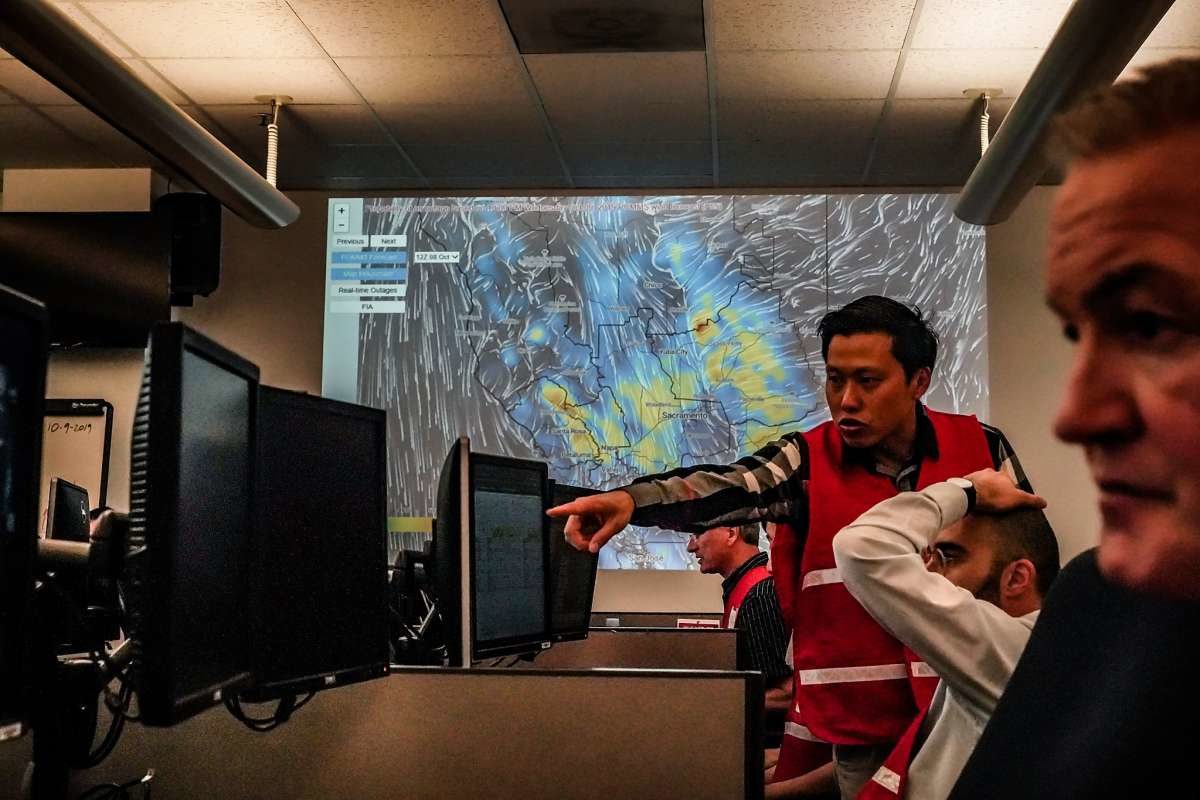
Read the latest version of this story here.
As word spread Tuesday of the preemptive shut-off — which is set to hit the Bay Area at noon — those in the locations expected to go dark stockpiled water and canned food and emptied store shelves of batteries for flashlights and cell phones. They made a run on gas pumps, causing lines that sometimes extended for blocks. And they hurried to help loved ones whose medical needs require electricity.
Transportation officials worked, mostly successfully, to keep open roads, bridges and tunnels, including the eight-lane Caldecott Tunnel that links Oakland and Berkeley to the suburbs to the east. Meanwhile, firefighting agencies staffed up. And school leaders canceled classes Wednesday on dozens of campuses, including UC Berkeley.
Of the Bay Area's nine counties, all but San Francisco was to be hit by the mass outage intended to stop trees from crashing into Pacific Gas and Electric Co. lines when fast, dry winds blow in after several months without sustained rainfall. Across the state, 34 counties will be affected, some starting in the early morning and others not until noon or later on Wednesday.
Major transit agencies, including BART, said they expected to run a normal schedule during the outages, though BART said some station escalators may not work.
PG&E's plan spurred anger across the state, which flared when the company's website — showing details on the outages — crashed repeatedly amid heavy traffic.
Dana Dickey, a Shasta County resident, had her power shut off for three days recently after a wildfire. She was bracing for another shut-off on Wednesday, but wasn't convinced it was necessary. Dickey also said that PG&E's clearing of vegetation near power lines had been inadequate, and that she had trouble getting information from the company's website during the previous shut-off.
"I'm not happy with PG&E for their high costs, lack of transparency and seemingly putting their shareholders over their customers," she said. "I don't think they are handling things well and need to have a better public plan for the future."
Some of the Bay Area's largest cities will see neighborhoods blacked out, among them San Jose, Oakland, Fremont, Santa Rosa, Hayward, Berkeley and San Mateo.
The utility's estimates for outages included 32,680 customers in Alameda; 51,310 in Contra Costa; 9,855 in Marin; 32,124 in Napa; 14,766 in San Mateo; 38,250 in Santa Clara; 32,863 in Solano; and 66,289 in Sonoma. A single customer account might be a residence or business with multiple people, so the true number of people who lose power is likely far more than the 800,000-customer figure PG&E shared — possibly into the millions.
The outages could last until next Tuesday, and perhaps even longer, for some customers. The company will have to inspect all of the power lines it turns off, while fixing any damage it finds, and that can't happen until the weather calms in most places on Thursday, according to PG&E. Officials said the job would require an "army" of workers in trucks, in helicopters and on foot.



The Rothschilds, a shareholder in PG&E, are trying to teach us a lesson.
But are you listening?